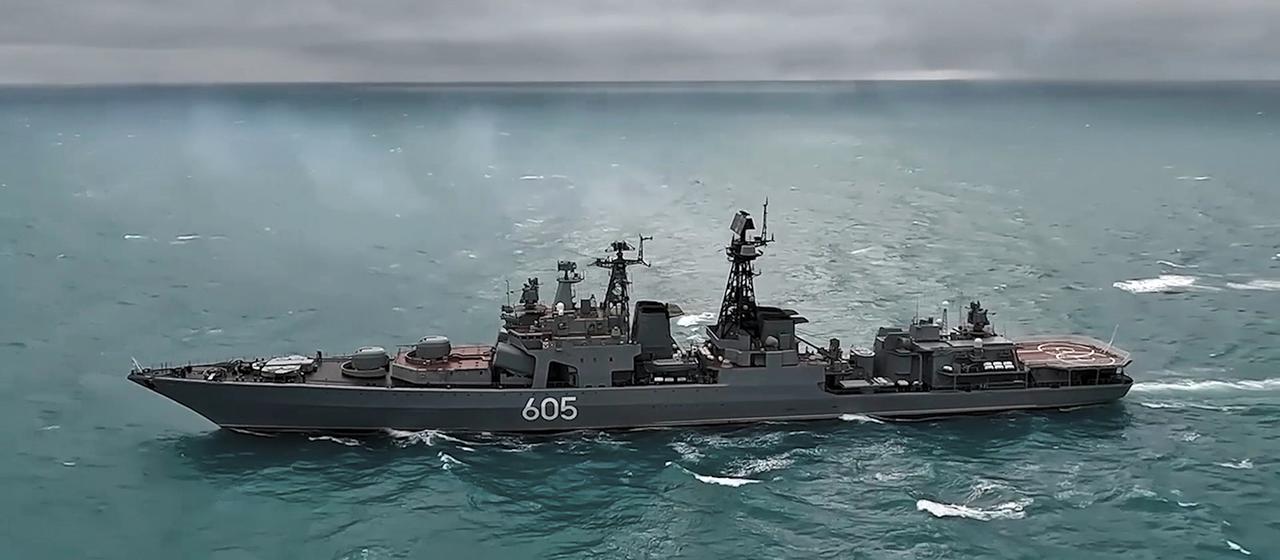
Russia and Belarus have begun the joint exercise "Zapad 2025" – less than 200 kilometers from NATO territory. While they see no direct threat, they urge vigilance.
Russia and Belarus have launched their joint military exercise"Zapad 2025." The exercise takes place every four years—is it all routine? In light of the war against Ukraine and the intrusion of drones into Polish airspace two days ago, the military exercise is fueling concerns in the West.
Nevertheless, NATO emphasizes that no"imminent military threat" arises from the exercise."Zapad 2025," however, is being monitored very closely, a spokeswoman for the military alliance said. Russia has repeatedly demonstrated"a lack of transparency" regarding the size and scope of its maneuvers. It is also known that the Kremlin also uses such exercises as a political threat. The NATO spokeswoman called on Russia and Belarus to"act predictably and transparently in accordance with their international obligations."
Moscow, however, views the concern over the joint exercises with Belarus as exaggerated. Under normal circumstances of peaceful coexistence, neighboring states would observe each other's military exercises, the Russian state news agency Tass quoted Kremlin spokesman Dmitry Peskov as saying."But now Western Europe is adopting a hostile stance toward us, and this is leading to an emotional overload for these countries," Peskov said. He emphasized that Russia has never threatened other countries.
Exercises less than 200 kilometers from the Lithuanian border
The"Zapad 2025" exercise is scheduled to last until Tuesday. According to Belarusian sources, the majority of it will take place east of the capital, Minsk – less than 200 kilometers from the border with EU and NATO member Lithuania.
In August, Belarusian Defense Minister Viktor Khrenin announced that most of the exercises would be centered around the city of Borisov. However, some"small units" would also be deployed in areas near the borders with Poland and Lithuania, practicing the scenario of repelling a"hypothetical enemy." The Russian Defense Ministry announced that the Baltic and Barents Seas would also be included in the maneuvers.
According to Belarus,"Zapad 2025" will also test the use of nuclear weapons and a new nuclear-capable medium-range missile of the "Oreshnik" type, which Moscow intends to station in Belarus in the future.
Concern in Warsaw
Poland fears that the maneuvers could also simulate the occupation of the so-called Suwalki Gap. This is a small area on the Polish-Lithuanian border, bordering the Russian exclave of Kaliningrad to the north and Belarus to the south. Polish Prime Minister Donald Tusk had expressed fears that Russia and Belarus could attempt to occupy this approximately 65-kilometer-wide strip of land if the war in Ukraine escalated. Belarus dismissed these concerns as"utter nonsense."
Poland, Lithuania, and Latvia have tightened security measures and restricted air traffic due to the maneuvers. Poland also ordered the closure of its border with Belarus.
Number of participating soldiers unclear
It is unclear how many soldiers are participating in the"Zapad 2025" exercise. Russia has not provided any official information on this. During the last"Zapad" exercise in 2021—i.e., before the start of Russia's war of aggression against Ukraine—approximately 200,000 Russian soldiers were deployed to the joint exercises.
Belarus announced in January that approximately 13,000 troops would participate in this year's exercises. However, in May, the government revised this figure downward and announced that it would reduce the number by half.
Russia launches parallel exercises of the Pacific Fleet
Parallel to the"Zapad" maneuvers, Russia has reportedly begun a naval exercise of the Pacific Fleet in the country's eastern waters."More than ten ships and boats, aircraft and helicopters of the naval aviation of the Pacific Fleet, as well as nuclear submarines and coastal missile batteries of the 'Bastion' type are participating in the maneuvers," the fleet's press service announced on Telegram. The exercise focuses on protecting the sea lanes in northeastern Russia and the coasts of the Kamchatka and Chukotka peninsulas in the region.
The units will train to detect submarines, repel air attacks, and fire missiles at sea targets. Particular attention will be paid to defending against air and sea drones.

